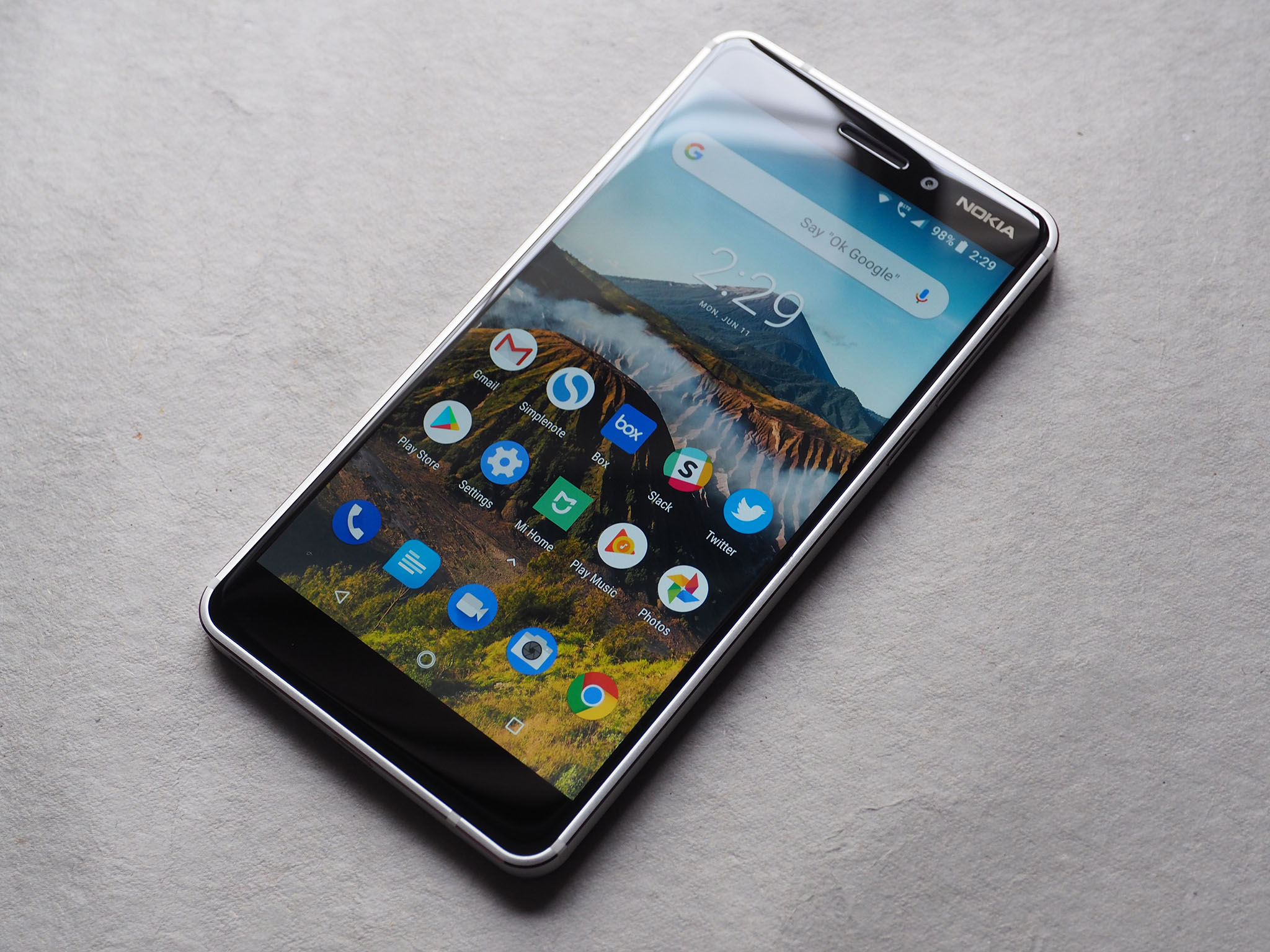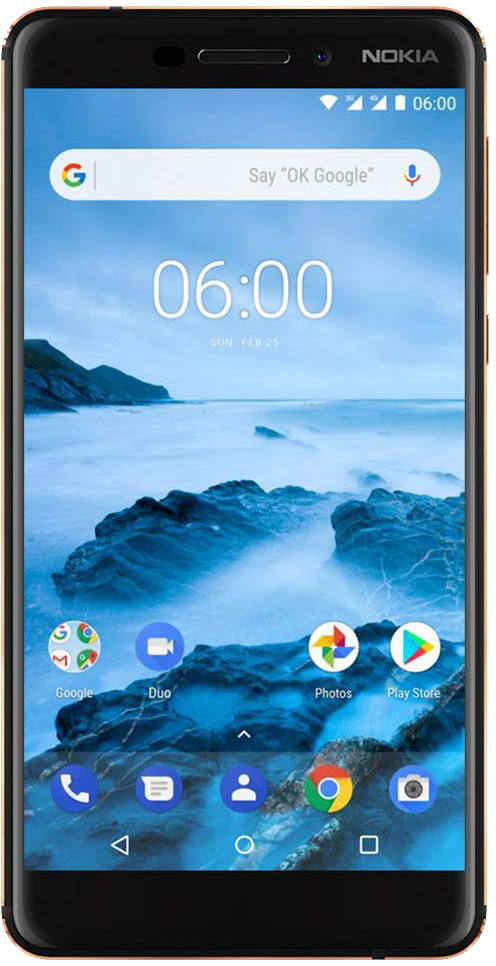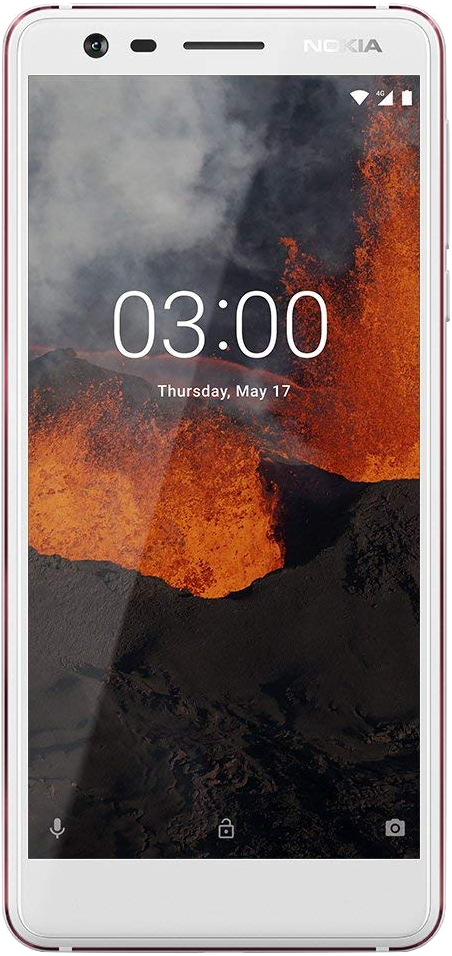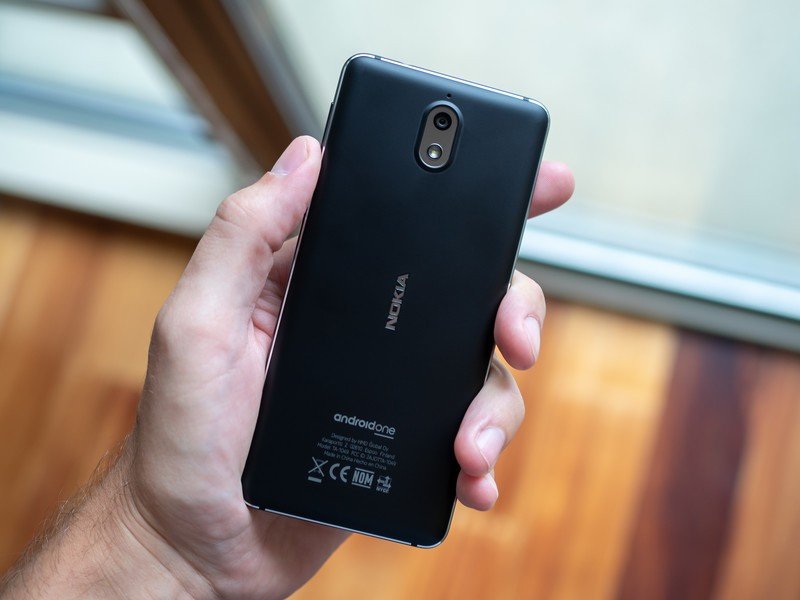Nokia 6.1 vs. Nokia 3.1: What are the differences and which should you buy?

Nokia 6.1

The Nokia 6.1 is just about one of the best phones you can get for $200. Its build quality is simply fantastic, the software is clean with guaranteed updates, and you even get things like NFC for Google Pay and a fingerprint sensor.
Nokia 6.1
Our pick
Nokia 3.1

For about $40 less, the Nokia 3.1 drops the 6.1's NFC chip, fingerprint sensor, and comes outfitted with a slower processor and less RAM. It's has a surprisingly great display and is built like a tank, but it's best suited for doing the basics and nothing more.
Nokia 3.1
Does the basics
For most people, the Nokia 6.1 is the better buy of the two phones. The Nokia 3.1 offers a lot for its price, but for just 40 bucks more, the 6.1 is outfitted with better performance, a fingerprint sensor, a larger display, supports contactless payments thanks to its NFC chip, and uses the newer USB-C port for charging instead of the outdated Micro-USB one.
Why you should get the Nokia 6.1
Nokia has been bombarding the smartphone space with new phones back-to-back, and in 2018, two of the more affordable ones that were released were the Nokia 3.1 and Nokia 6.1. Both handsets are great devices that are worthy of your consideration, but for most buyers, we think it's worth handing over a few more bucks for the 6.1.
Why? It's better than the 3.1 in just about every way and doesn't cost much more.
Starting first with performance, the Nokia 6.1 uses the tried-and-true Snapdragon 630 processor from Qualcomm while the Nokia 3.1 is powered by the MediaTek MT6750. Both phones work well for checking social media, browsing the web, and managing emails, but the Nokia 6.1 is better at more demanding tasks such as playing games. On a similar note, the Nokia 6.1's extra 1GB of RAM over the Nokia 3.1 means it can have more apps open at once in the background for more seamless multitasking.
Some other advantages of the Nokia 6.1 include a fingerprint sensor, an NFC chip that allows you to use your phone to pay for things at stores that accept Google Pay, USB-C for charging, and a better rear camera.
Be an expert in 5 minutes
Get the latest news from Android Central, your trusted companion in the world of Android
| Header Cell - Column 0 | Nokia 6.1 | Nokia 3.1 |
|---|---|---|
| Operating System | Android 9 PieAndroid One | Android 9 PieAndroid One |
| Display | 5.5-inch16:91920 x 1080IPS LCD | 5.2-inch18:91440 x 720IPS LCD |
| Processor | Qualcomm Snapdragon 630 | MediaTek MT6750 |
| Rear Camera | 16MPf/2.0 | 13MPf/2.0 |
| Front Camera | 8MPf/2.0 | 8MPf/2.0 |
| RAM | 3GB | 2GB RAM |
| Storage | 32GBExpandable up to 256GB | 16GBExpandable up to 256GB |
| Battery | 3,000 mAh | 2,990 mAh |
| Charging | USB-C | MicroUSB |
| Security | Rear fingerprint sensor | ❌ |
| NFC | ✔️ | ❌ |
| Audio | Mono speaker3.5mm headphone jack | Mono speaker3.5mm headphone jack |
| Carrier Compatibility | AT&TT-Mobile | AT&TT-Mobile |
Strengths held by both phones are excellent build quality, great displays, and all-day battery life. Even more important, the Nokia 3.1 and Nokia 6.1 are running Android One. This means you get a clean, stock build of Android out of the box with guaranteed updates down the road. When talking about phones in this price range, that's a pretty rare find.

Don't think that all this high praise for the Nokia 6.1 means the 3.1 is a bad phone. That couldn't be further from the truth, but when stacked up side-by-side with its sibling, the Nokia 3.1 is a tough recommendation for anyone that can afford the slightly more expensive 6.1.
With just $40 separating the Nokia 6.1 and Nokia 3.1, the latter gives you a lot of extra niceties that result in a better day-to-day user experience. The Nokia 3.1 is a good option for buyers that are really strapped for cash and just need something for as little money as possible, but for everyone else, it's worth going all the way for the Nokia 6.1

One of the best phones for $200.
With a price of just $200 these days, the Nokia 6.1 delivers a lot more than you'd expect for such a low cost. It's built incredibly well, its Snapdragon processor works like a champ, and you get nice touches like a fingerprint sensor and NFC for Google Pay. The cameras aren't the best and we wish the display used the newer 18:9 form factor, but no matter how you slice it, this is a seriously great value.

A solid choice for super-tight budgets.
On its own, the Nokia 3.1 is a solid low-cost Android phone. It has a surprisingly great display, the build quality is second-to-none at this price, and its clean software experience is a joy to use and comes with guaranteed updates as they're made available in the future. However, for just $40 more, the Nokia 6.1 delivers improvements in virtually every way. If you can spare the extra few dollars, we recommend upgrading.
Joe Maring was a Senior Editor for Android Central between 2017 and 2021. You can reach him on Twitter at @JoeMaring1.

